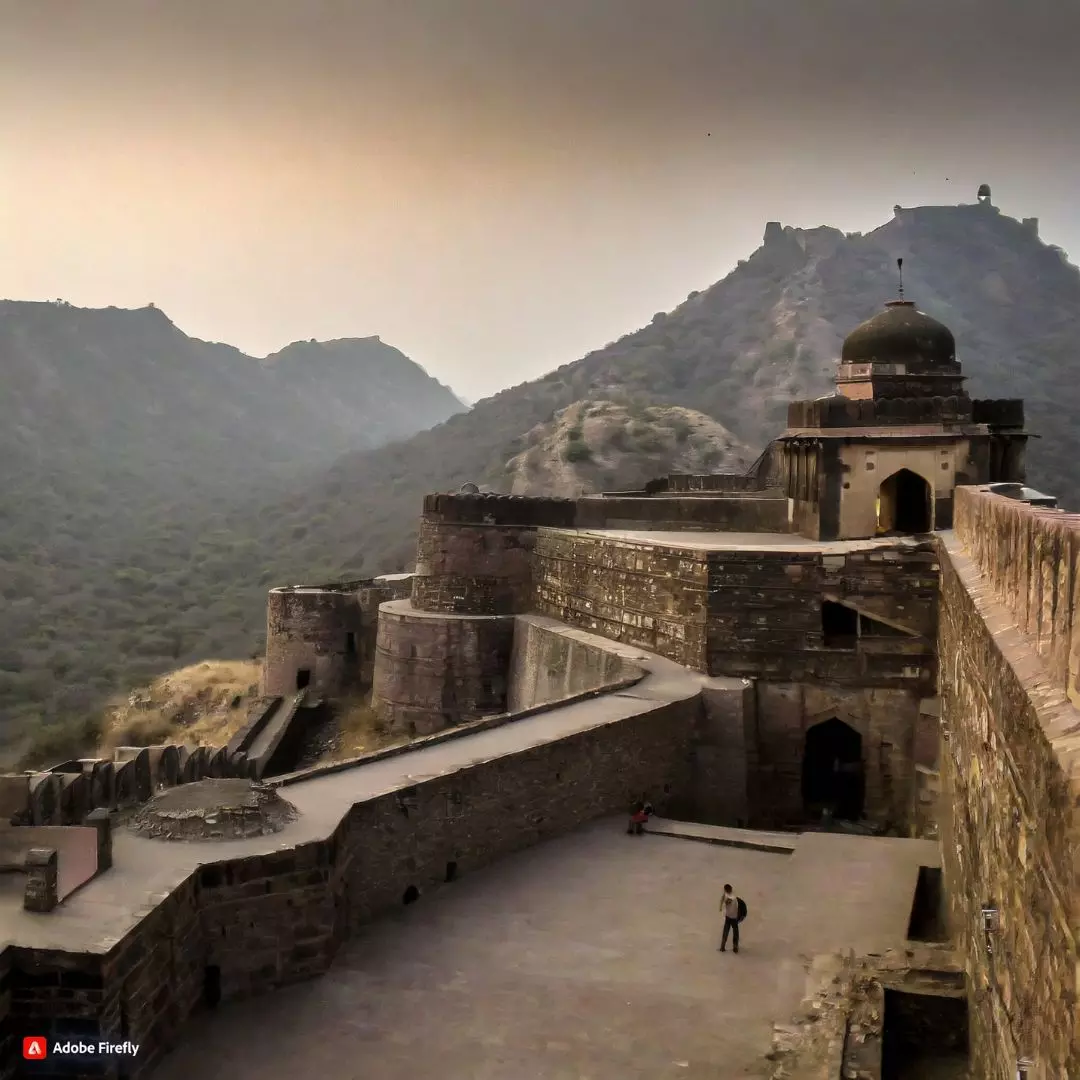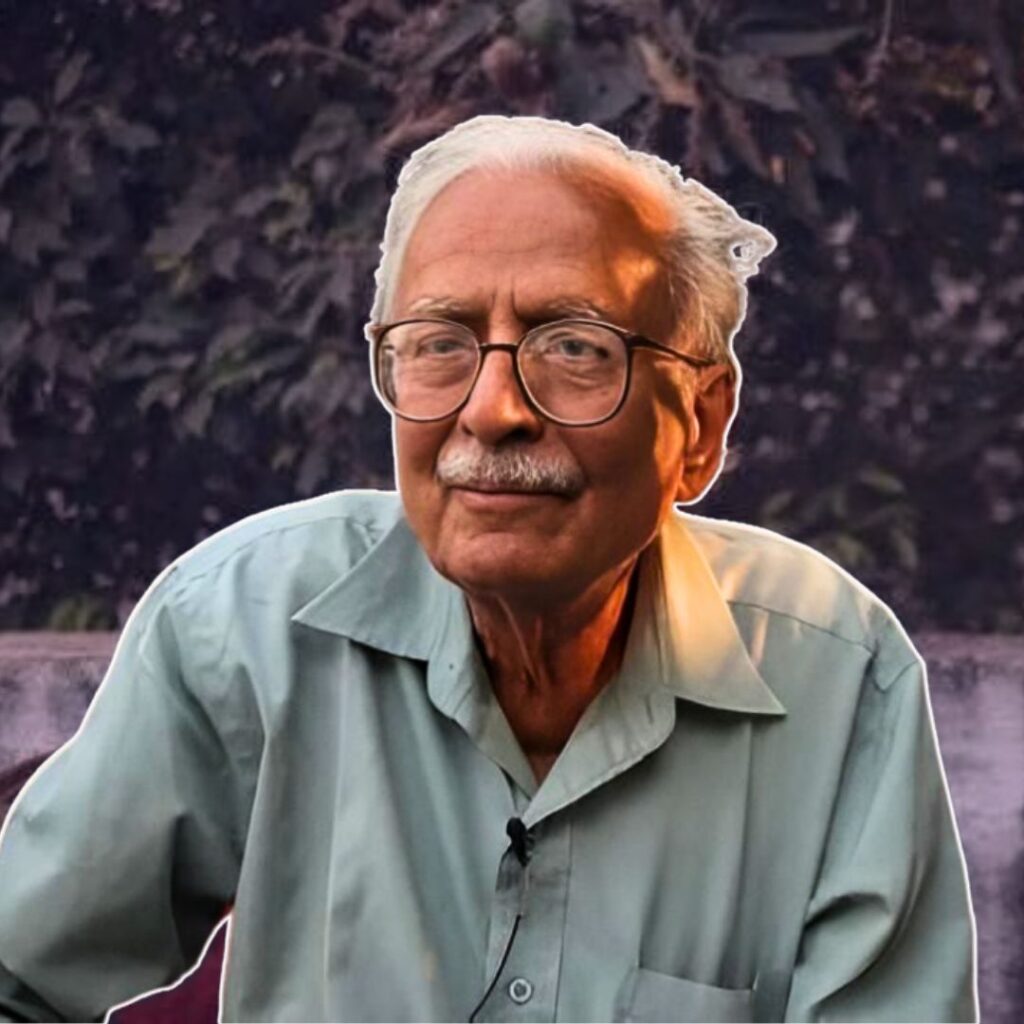Nestled amidst the timeless folds of the Aravalli hills, Bhangarh Fort emerges as more than just an architectural marvel; it’s a portal to an otherworldly realm. Located a stone’s throw away from the Sariska Wildlife Sanctuary, this 17th-century fort, a creation of Raja Madho Singh, invites not only history enthusiasts but also those daring enough to explore the eerie landscapes of the supernatural. Beyond the crumbling stones and echoing corridors, Bhangarh whispers chilling tales of curses, spectral apparitions, and a haunted legacy that has cemented its status as one of India’s most paranormally charged destinations.
Picture a vibrant Bhangarh—a bustling township adorned with over 9,000 houses and a regal palace resonating with life. Guarded by imposing gates and fortified walls, the fort once stood as a bastion of prosperity. However, a chilling decline, veiled in legends of curses and spectral inhabitants, cast an ethereal pall over its once-thriving existence, turning Bhangarh from a flourishing kingdom to a haunted relic.
As the morning sun bathes the ruins in golden hues, the ghostly silence of Bhangarh’s dilapidated structures conceals the whispers of its past. It’s a place where the bygone era intersects with the supernatural, and each stone seems to hold within it the residual echoes of an age that has long faded away.
While the passage of time may have etched its mark on the stone walls, Bhangarh Fort remains an indelible testament to the architectural brilliance of the 17th century. The Gopinath Temple, with its intricate carvings, the Nartakiyon Ki Haveli, a silent witness to days of revelry, and the skeletal remains of the royal palace—all bear witness not only to a glorious past but also to the spectral ambiance that shrouds every corner. The fort doesn’t just echo with history; it resonates with haunting whispers.
Wandering through the ancient halls, one can’t help but marvel at the grandeur that once was. The Gopinath Temple, a masterpiece of Nagara-style architecture, stands as a silent witness to the skilled craftsmanship of a bygone era. Its walls, adorned with carvings that tell stories of devotion and artistic finesse, now cast eerie shadows as the sunlight filters through the broken lattice windows.
The Nartakiyon Ki Haveli, once alive with the rhythmic beats of dancers’ footsteps, now stands as a testament to the fleeting nature of time. The air is thick with the nostalgia of a vibrant past, echoing the haunting tunes that might have once filled its now desolate courtyards.
Amidst the ruins, the skeletal remains of the royal palace rise like a ghostly specter. What was once a seven-story marvel now stands reduced to four, each floor whispering secrets of power, luxury, and inevitable decay. It’s here that the lines between the historical and supernatural blur, and one can almost feel the lingering presence of the royals who once walked these corridors.
Bhangarh Fort transcends its historical identity, veiled in legends that weave themselves into the very fabric of its weathered stones. The curse of Baba Balau Nath, disrupted in his meditative sanctuary, forewarned of the town’s gradual decline—a prophecy ignored at great peril. Princess Ratnavati’s tragic tale, entwined with a wizard’s cursed love potion, adds a spectral hue to Bhangarh, a hue that lingers in the silent corridors, inviting shivers down the spine and daring the intrepid to confront the haunted specters lingering within its ancient walls.
The Curse of Baba Balau Nath is a saga that has transcended time, creating an invisible barrier that separates the fort from the outside world. As the story goes, the sage granted permission for the fort’s construction with one condition—the structures shouldn’t surpass the height of his own dwelling, and their shadows must never touch his abode. Ignoring this warning, the fort’s subsequent ruler, Ajab Singh, dared to raise its height significantly, thereby invoking the wrath of the sage. The curse unfolded, leading to the gradual demise of the entire town.
Princess Ratnavati’s tale adds a romantic yet tragic twist to the haunted legacy of Bhangarh. A wizard, consumed by an unrequited love for the beautiful princess, attempted to win her heart through black magic. When his nefarious plan was thwarted by Ratnavati herself, he cursed the entire city, sealing its fate in a series of misfortunes.
Entering Bhangarh Fort is not just a stroll through history; it’s a plunge into the ethereal. Remnants of Johari Bazaar and the houses of dancing girls beckon the imagination to reconstruct a market now frozen in time. Structures devoid of roofs add an eerie touch, intensifying the supernatural mystique that heightens as the sun descends. The haunting whispers come to life, creating an atmosphere that resonates with the echoes of a bygone era, now haunted by unseen forces.
As the sun dips below the horizon, casting long shadows on the ancient stones, Bhangarh transforms into a realm where history and the supernatural intertwine. The bazaar, once a lively hub of commerce, now echoes with the phantom footsteps of long-gone merchants. The dancing girls’ houses, now mere remnants of opulent revelry, evoke a sense of spectral celebration as the night unfolds.
The Archaeological Survey of India (ASI) imposes a protective embargo after sunset, a testament to the enigma that shrouds Bhangarh in the cloak of darkness. Visitors, lured by the prospect of encountering the paranormal, find themselves at the crossroads of history and hauntings as the fort unveils its spectral grandeur after dark.
As the sun bids adieu, Bhangarh Fort transforms into a canvas of paranormal intrigue. Ghostly encounters reported within its precincts, ethereal echoes of a marketplace resonating in the night, and the Archaeological Survey of India (ASI) imposing a protective embargo after sunset—all contribute to the fort’s standing as one of India’s most haunted locales. The veil of dusk is when Bhangarh unveils its spectral grandeur, inviting those with the courage to confront the otherworldly in the depths of the haunted night.
In the heart of the night, when the moon casts an ethereal glow over the ancient stones, Bhangarh emerges as a spectral playground. Witnesses speak of inexplicable shadows, ghostly apparitions, and eerie whispers that defy the rational realm. The very air seems charged with a haunting energy, inviting the intrepid to embark on a journey through a realm where history meets the supernatural.
The fort, now enveloped in the shroud of darkness, becomes a theater of the paranormal. The ancient temples, once centers of divine worship, now echo with the footsteps of unseen entities. The havelis, where life once thrived, resonate with the whispers of a bygone era, creating an ambiance that transcends the earthly plane.
Bhangarh Fort, with its intricate dance of history, architectural allure, and spectral enigma, stands not just as a relic but as a gateway to the supernatural. The Gopinath Temple’s carved whispers, the Nartakiyon Ki Haveli’s silent echoes, and the legends that meander through its ancient stones beckon those with a thirst for unraveling the cryptic tales of Rajasthan’s most haunted citadel. Bhangarh, beneath the cosmic canvas, invites the intrepid to explore its haunted echoes, where history and the paranormal entwine in a timeless waltz across the eons. In the silence of its ruins, Rajasthan’s haunted past whispers, and Bhangarh stands, a timeless spectacle, inviting those with the courage to confront its spectral secrets on an odyssey that transcends the boundaries of the earthly realm. It’s not merely a fort; it’s a portal to a realm where the past and the paranormal converge, creating an experience that lingers in the hearts of those daring enough to step into the haunting mystique of Bhangarh.
Also Read: Unveiling Ancient Indian Wisdom: A Comprehensive Guide To Ethical Financial Practices












